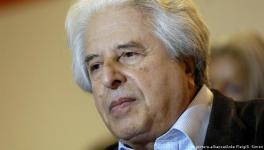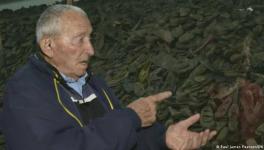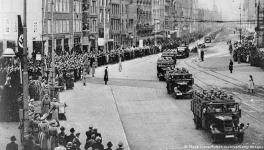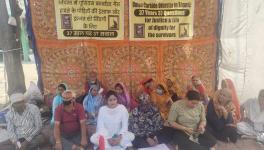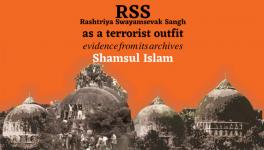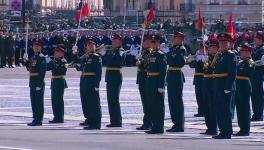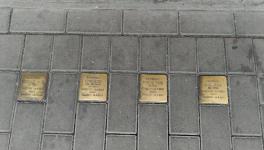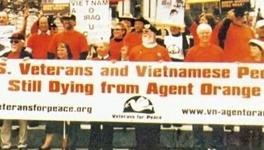Auschwitz's Harrowing History
More than 49 million people have visited the memorial site at the former Auschwitz concentration camp in southern Poland since its opening in 1947. Normally, more than 2 million visitors from all over the world come to visit the memorial every year, but the pandemic has reduced these numbers to around 500,000 annually.
Located about 50 kilometers (30 miles) west of Krakow, at the gates of the small town of Oswiecim, the former Nazi concentration camp complex occupied a huge area up until 1945. Today there is a state museum and memorial on the site.
In addition to the Nazis' central extermination camp, the complex consisted of three main camps and sub- and external camps of various sizes. It was an industrial killing machine of unimaginable proportions. The museum at the main concentration camp and the memorial estate of Auschwitz-Birkenau together cover 191 hectares (472 acres).
Remembering the mass killings remains our responsibility for the future
Here are 10 historical facts and figures related to the term "Auschwitz":
1. The town of Oswiecim (Auschwitz)
Long before the name became known through the German concentration camp, Auschwitz (Polish: Oświęcim) was a small town with an eventful history.
The town's name, Oswiecim, was first mentioned around 1200. In 1348 it was incorporated into the Holy Roman Empire, and German became the official language.
At times it belonged to Austrian territory; at other times, the Duchy of Auschwitz was part of the Kingdom of Bohemia or of the Kingdom of Prussia — and was later once again returned to the Kingdom of Poland. And after World War I, it was part of the newly established Polish state.
When the town was connected to the railways in 1900, Oswiecim's economy developed quickly. Accommodation was required for the many seasonal and migrant workers needed in the surrounding industrial areas of Upper Silesia and Bohemia. They were housed in newly-built brick houses and wooden barracks. These buildings were later to form the basis of the Auschwitz National Socialist concentration camp.
Shortly after the beginning of World War II in September 1939, Oswiecim was conquered by the German Wehrmacht and annexed by the Third Reich. In 1940, under the leadership of Heinrich Himmler, the SS (the "Schutzstaffel," or the Nazi elite terror force responsible for appointing personnel at the concentration camps) was able to quickly and without much construction work convert the area into a concentration camp, the Auschwitz I main camp.
The vast area of the Auschwitz-Birkenau extermination camp (Auschwitz II) was a later addition.
This gate is part of the infamous history of the Auschwitz concentration camp
2. The Jewish population
Before World War II, more than half of Oswiecim's 12,000 inhabitants were Jewish. The Jewish community had grown considerably due to immigration; the number of ethnic Germans in the town had been very small before the Nazis came. This changed abruptly after the attack by Hitler's Wehrmacht on Poland on September 1, 1939, and the subsequent military occupation of the country.
The Nazis' policy of racial extermination had the Jewish population displaced to make way for resettled Germans. Many Jews were isolated in ghettos or sent away to labor camps. Others initially lived cramped together and were isolated from the rest of the population in the old town of Oswiecim.
From 1940 onward, many were forced to work as slave laborers for the SS, in what was to become the concentration camp. Many others were sent to labor camps elsewhere in the country. After 1942, the few remaining survivors in Auschwitz were killed.
3. The strategic hub
The town of Oswiecim happened to be located at a strategically important site for the Nazis, as its railway station was at the junction of lines from Prague, Vienna, Berlin, Warsaw and the northern industrial areas of Silesia. This created perfect conditions for the mass transport of people from the so-called "Altreich," or Germany's territory in 1937, as planned by the SS and the authorities of the Reich Main Security Office in Berlin.
An overview of the vast concentration camp complex
SS senior official Adolf Eichmann was put in charge of the deportations of people into camps in these eastern regions. He had prepared the files for the infamous "Wannsee Conference" held on January 20,1942. High-ranking SS and Nazi party officials gathered at the Wannsee villa for a meeting initiated by the chief of the Reich Main Security Office, Reinhard Heydrich.
After 90 minutes, they had set their murderous plan for a "final solution to the European Jewish question." All the countries from which Jews should be deported by train were listed in the minutes of the fateful meeting.
4. The concentration camp system
Following Dachau, Sachsenhausen, Buchenwald, Flossenbürg, Mauthausen and the women's camp of Ravensbrück, Auschwitz was the seventh concentration camp to be gradually established by the Nazis — and by far the largest one. The site on the outskirts of Oswiecim was planned as a location for camps of different sizes.
In addition to the main camp (Auschwitz I) and the huge killing center of Birkenau (Auschwitz II), where the crematoriums were located, there were smaller external camps, as well as the Buna and Monowitz labor camps (Auschwitz III).
In line with decisions taken at the Wannsee Conference, in the spring of 1942, Auschwitz was turned into a systematic death factory of unimaginable proportions. As the SS commandant of the Auschwitz concentration and extermination camp, Rudolf Höss managed the guards and the entire administration of the camp, and was responsible for the technical execution of the mass murders, up until his replacement in November 1943.
A powerful weapon: A single can of Zyklon B was enough to kill more than 1,000 people
5. The SS influence zone
By the spring of 1942, 2,000 SS security guards were employed in Auschwitz. Initially, only German citizens of the empire worked at the concentration camp, but later, "Volksdeutsche" — German-speaking people from outside of Germany — were also among the staff.
By the end of summer 1944, this number had doubled to more than 4,000 SS members serving at Auschwitz. This also included camp guards, typists and nurses who were employed by the SS but did not wear badges of rank.
The SS also controlled local industrial companies and craftspeople who, profiting from the expansion of the camp, had settled in the region. The so-called SS settlement developed outside the camp's borders, offering all kinds of amenities to its inhabitants. More than 8,000 members of the SS and their relatives were a part of the camps until its end.
6. The death factory
From 1942 onwards, the camps became centers of mass killings. Around 80% of the new inmates were not registered as prisoners, but sent directly upon arrival to gas chambers.
In the spring of 1943, additional crematory ovens were put into operation in the expanded complex of Auschwitz-Birkenau. The SS tested their functionality on a group of transported prisoners: After their agonizing death in a gas chamber filled with Zyklon B, the bodies of 1,100 men, women and children were burned, and their ashes dispersed in surrounding lakes.
This pond contains the ashes of tens of thousands of murdered people
The camp's construction manager, Karl Bischoff, reported to Berlin: "From now on, a total of 4,756 bodies can be cremated within 24 hours." A three-track railroad ramp was built in Birkenau with the aim of speeding up the selection of deportees at their arrival. This rail line can still be seen at the memorial site today.
The last transports of Jews from all over Europe arrived in Auschwitz in late autumn of 1944. Among the deportees from the occupied Netherlands was 15-year-old Anne Frank. Her diaries, which she wrote while in hiding in the Netherlands and which were preserved by chance after she was captured, serve as a lasting document of the persecution of Jews by the Nazis.
7. The number of victims
Calculations of the number of Holocaust victims who died at Auschwitz still vary, as new details continue to come to light through historical and family archives.
While it's likely that we will never know the precise number of victims, it's now estimated that more than 5 million people were deported to Nazi concentration camps. Only very few survived. The Nazi regime is understood to have killed some 6 million Jews in the Holocaust.
The infamous 'Judenrampe,' the platform where convoys of Jews arrived and where prisoners were sorted
The names of more than 60% of the 400,000 prisoners who were registered in the former Nazi German death camp Auschwitz have been established, according to a research project commissioned by the Auschwitz Memorial that was published in December 2019.
Not included in the database are the more than 900,000 Jews deported in mass transports from European territories occupied by Germany, who were murdered in gas chambers immediately upon arrival to the camp without being registered. Their identity could nevertheless be determined through meticulously kept deportation lists.
Upon their arrival in Auschwitz-Birkenau, the only ones to be registered were those with a tattooed prisoner number; those who on the selection platform or so-called "Judenrampe" were deemed fit enough to be used as laborers in the camp. Most people, especially the elderly, ill, women and small children, were directly and without prior registration forced into the gas chambers and murdered.
According to the numbers of the Auschwitz Memorial, more than 1.1 million people were killed at the Auschwitz-Birkenau extermination camp. Some 90% of the victims were Jews — primarily from Hungary, Poland, Italy, Belgium, France, the Netherlands, Greece, Croatia, the Soviet Union, Austria and Germany. Other targeted victims of Nazi killings included Sinti and Roma, gay people, Catholics, Jehovah's Witnesses, and the disabled, as well as political opponents.
8. The liberation of the imprisoned
On January 27, 1945, Soviet Red Army soldiers reached the barbed wire fences of the camp. They encountered almost 7,000 emaciated and feeble inmates, with 500 children among them. Most of them couldn't even stand up and were lying motionless on the ground.
They had been too weak for the death marches, in which SS guards had driven tens of thousands toward the West through the freezing cold.
The SS had cleared the camp at the end of January in a last-minute attempt to cover up their mass murder, driving some 56,000 to 58,000 prisoners into the cold. The Nazis had also burned documents, files and death certificates. Only a few documents and photos were preserved. Most of the barracks, gas chambers and crematories had been blown up as well.
The emaciated prisoners on the death marches had been wearing only the thin cotton clothes of the concentration camp, and hardly any of them had shoes on. An estimated 15,000 persons died on these marches — either from starvation, freezing to death, or being shot.
Some Auschwitz prisoners survived when the concentration camp was liberated at the end of January 1945 by Soviet troops
9. The Auschwitz-Birkenau memorial site
In early 1946, the Soviet occupying forces transferred authority over the former camp to the Polish state. Based on an initiative of former prisoners and a decision by the Polish government, the Auschwitz-Birkenau State Museum was established as a memorial in 1947.
The memorial site includes preserved facilities, buildings and barracks of the main Nazi concentration camp (Auschwitz I) and the almost-empty site of the Auschwitz-Birkenau extermination camp (Auschwitz II), as well as the current museum area. The first exhibition was created in collaboration with Israel's World Holocaust Remembrance Center, Yad Vashem.
In the first year of its existence, the memorial site was visited by 170,000 people. In 2018 and 2019, more than 2 million visitors a year came to the site of Holocaust remembrance, with many school groups among them. The Auschwitz memorial was listed as a UNESCO World Heritage Site in 1979.
The 'March of the Living' is held every year at Auschwitz. Left: Holocaust survivor Edward Mosberg
10. The last survivors
Every year, January 27 is commemorated as the day of the liberation of the Auschwitz concentration camp in 1945. A commemoration ceremony also takes place in Germany's parliament on that day.
In past years, German presidents, European politicians, as well as Jewish Holocaust survivors, including the now-deceased Ruth Klüger and 96-year-old Anita Lasker-Wallfisch, as well as prominent Jewish writers and historians, such as Marcel Reich-Ranicki and Saul Friedländer, have given emotional speeches to mark the occasion.
International Holocaust Remembrance Day has been held worldwide since 2005. Today, there are very few remaining Auschwitz concentration camp survivors. During the annual "March of the Living," they walk hand in hand with young people from all over the world from the former concentration camp Auschwitz to Birkenau.
It is up to the following generations to keep carrying the remembrance forward.
This is an updated version of an article first published on January 26, 2020. It was originally written in German.
Get the latest reports & analysis with people's perspective on Protests, movements & deep analytical videos, discussions of the current affairs in your Telegram app. Subscribe to NewsClick's Telegram channel & get Real-Time updates on stories, as they get published on our website.

















